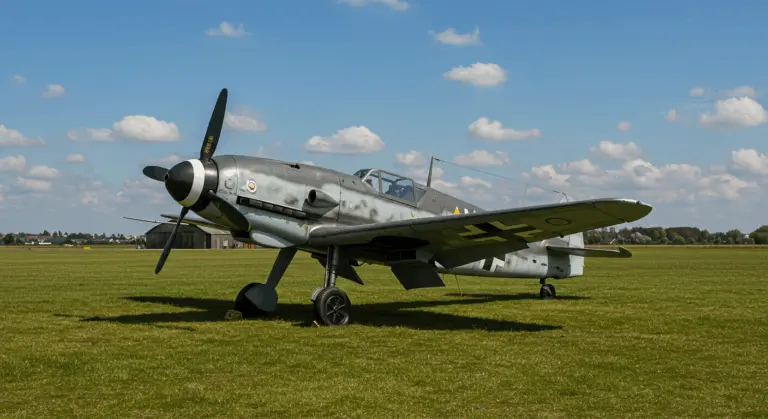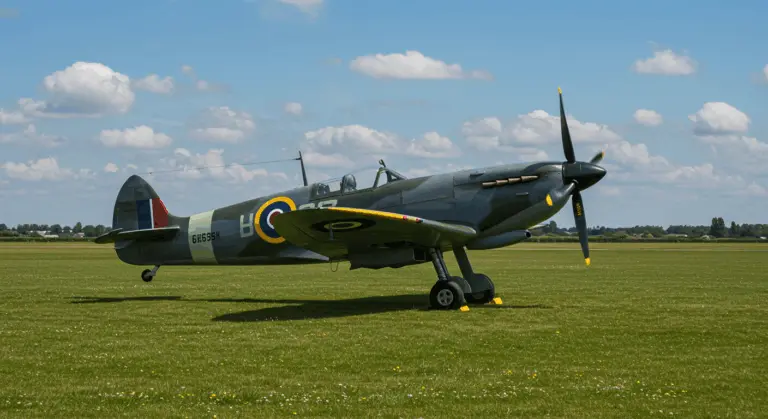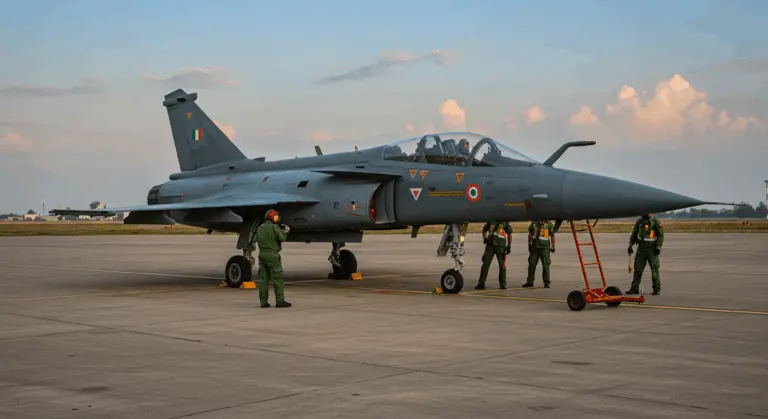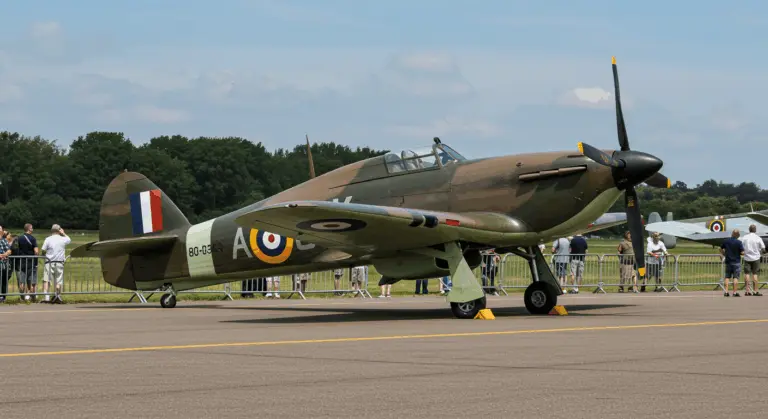Overview of the Chengdu J-20 Fighter Jet
The Chengdu J-20, nicknamed the “Mighty Dragon,” stands as China’s inaugural operational fifth-generation stealth fighter. Developed by Chengdu Aircraft Corporation for the People’s Liberation Army Air Force (PLA AF), this twin-engine marvel achieved operational status in 2017. This achievement represents a major advancement in China’s military aviation capabilities.
Designed primarily for air superiority with integrated precision strike capabilities, the J-20 cuts a distinctive figure across the sky. Its elongated fuselage flows into a chiseled nose, crowned by a seamless frameless canopy. The aircraft’s canard delta configuration—complete with forward-swept trailing edges and twin outward-canted vertical stabilizers—delivers exceptional maneuverability while maintaining stealth characteristics.
Spanning 13.01 meters and capable of reaching Mach 2.0, the J-20 draws its power from twin Shenyang WS-10C turbofan engines. Earlier variants relied on Russian AL-31F power plants. The aircraft features the JLJ-5 Active Electronically Scanned Array (AESA) radar—a sophisticated sensor that provides pilots with advanced detection capabilities and situational awareness in contested airspace.
The J-20 has evolved through several key variants:
-
J-20A: The initial production model.
-
J-20B: An improved model reportedly featuring thrust-vectoring technology.
-
J-20S: A two-seat variant designed for expanded mission capabilities like training or command and control.
Development and History of the J-20
The program aimed to reduce China’s dependence on foreign military technology while advancing its aerospace capabilities to compete with major powers like the United States.
The maiden flight on January 11, 2011—a crisp 18-minute demonstration—was strategically timed to coincide with then-U.S. Secretary of Defense Robert Gates’ visit to China. This timing was no coincidence—it served as a deliberate demonstration of China’s growing military-technological capabilities.
An extensive testing program followed. Multiple prototypes, each bearing designations from 2001 to 2017, allowed engineers to methodically refine every aspect of the design before settling on the final production configuration. By 2017, mass production had commenced alongside the aircraft’s official PLA AF induction—a timeline that has since accelerated as China rapidly expands its fifth-generation fighter fleet.
The J-20’s development reflects China’s rapid aerospace advancement. January 11, 2011, stands as the program’s defining moment—when the first prototype lifted off from Chengdu Aircraft Design Institute’s airfield for an 18-minute inaugural flight. This brief but crucial demonstration proved the design’s fundamental airworthiness and marked China’s bold entry into the exclusive stealth fighter club.
March 2017 brought another watershed moment: official PLA AF service entry. With this achievement, China became only the second nation after the United States to field an operational fifth-generation stealth fighter. Russia’s Su-57 would follow later, highlighting China’s significant achievement in surpassing other major military powers in stealth fighter development.
Development continued. The initial J-20A production model spawned the enhanced J-20B, reportedly featuring thrust-vectoring technology for superior aerial agility. Then came 2021’s revelation: the J-20S two-seat variant. This dual-cockpit configuration potentially unlocks advanced electronic warfare, command and control functions, or specialized training roles—demonstrating China’s commitment to continuous improvement.
Design Features and Stealth Technology
The J-20 employs a comprehensive approach to stealth technology. Multiple technologies converge to slash its detectability across various electromagnetic spectrums. Stealth shaping forms the foundation—angled surfaces meticulously designed to scatter radar waves away from their origin points. This geometric precision dramatically reduces the fighter’s radar cross-section, particularly from frontal aspects, rendering it nearly invisible at extended ranges.
Diverterless supersonic inlets (DSI) serve dual purposes: minimizing radar signature while reducing maintenance complexity. Meanwhile, internal weapons bays preserve the aircraft’s stealthy silhouette even when armed for combat.
The stealth arsenal extends beyond geometry. Radar-absorbent materials (RAM), specialized coatings, and composite airframe construction further diminish radar and electromagnetic signatures. Embedded antennas maintain the clean aerodynamic lines essential for stealth effectiveness.
The J-20’s electronic warfare capabilities center on the JLJ-5 AESA radar—a technological marvel offering high-resolution scanning while maintaining low probability of intercept. This sophisticated sensor network, integrated with complementary electronic systems, delivers pilots superior situational awareness in the most contested environments. These capabilities are essential for the aircraft’s dual mission profile: air superiority and precision strikes.
The J-20’s stealth design demonstrates sophisticated signature reduction engineering. Every surface, every angle serves a purpose. Aligned edges, canted surfaces, and serrated panel joints work in concert to redirect radar energy away from hostile receivers. The diverterless supersonic inlets (DSI) eliminate radar-reflecting mechanical ramps while efficiently channeling airflow to the engines across all flight regimes.
Recent technological advances have reportedly enhanced the J-20’s electronic capabilities. Chinese state media claims that integrated silicon carbide (SiC) semiconductors have tripled the radar’s detection range—a substantial improvement. These SiC components excel in high-power, high-temperature environments where traditional silicon falters. The result? Enhanced electronic warfare and sensor capabilities while maintaining minimal electromagnetic signature.
Aviation Week’s 2021 assessment offers sobering perspective on the J-20’s stealth performance. From frontal aspects, it matches Russia’s Su-57 favorably. However, it trails America’s F-35, particularly from rear quarters where engine signatures prove challenging to mask. This analysis suggests China has achieved significant stealth progress while acknowledging certain design compromises that affect radar cross-section from specific angles.
The PLA AF has also developed innovative tactical concepts. The PLA AF has reportedly developed ingenious operational concepts to maximize the J-20’s stealth advantages. In this approach, fully stealthy J-20s carrying only internal weapons serve as forward scouts and targeting platforms. They coordinate with “beast mode” J-20s loaded with external weapons for maximum firepower. This force-multiplier approach potentially overcomes stealth designs’ inherent weapons capacity limitations while maintaining reduced-signature forward presence in hostile airspace.
Armament and Missile Systems of the J-20
The J-20’s weapons architecture supports its air superiority and precision strike missions. A spacious main ventral bay accommodates larger munitions, while two compact lateral bays house short-range air-to-air missiles.
The aircraft features an innovative the PL-10 missile deployment system. These short-range weapons can partially emerge to acquire targets while bay doors remain sealed—a clever solution that preserves stealth integrity during target engagement.
Beyond-visual-range combat relies on the formidable PL-15 medium-to-long-range air-to-air missile. This weapon reportedly features AESA radar guidance and exceeds 200 kilometers in range. Photographic evidence reveals J-20s carrying up to eight PL-15s on four underwing pylons. However, this “beast mode” configuration sacrifices stealth for firepower—likely reserved for scenarios where air superiority is already established.
Notably absent is an internal cannon—a deliberate omission that distinguishes the J-20 from the F-22 and F-35. This design choice signals a philosophy favoring long-range, missile-centric engagements over close-quarters dogfighting.
Operational History and Deployment
March 2017 marked the J-20’s operational debut with the 9th Aviation Brigade at Wuhu Air Base claiming the honor as the first frontline unit to receive the stealth fighter.
Deployment patterns reveal strategic intent. J-20s concentrate in China’s eastern and southern theaters—regions encompassing Taiwan and the South China Sea. This positioning reflects the aircraft’s anticipated role in establishing air superiority over contested territories during potential conflict scenarios. The PLA AF has integrated J-20s into complex training exercises, including simulated combat against dedicated aggressor squadrons flying fourth-generation fighters. These war games refine tactics and operational procedures.
While operational details remain classified, Chinese state media reports describe successful performance. J-20s have reportedly achieved radar evasion and executed successful beyond-visual-range engagements during complex military exercises.
The J-20’s introduction has fundamentally altered Western Pacific power dynamics. China can now project formidable air power within the first and second island chains, directly challenging the historical air superiority enjoyed by the U.S. and its regional allies. As production accelerates and more aircraft enter service, the J-20 becomes increasingly central to China’s anti-access/area denial (A2/AD) strategy—a defensive posture designed to deter foreign military intervention in China’s perceived sphere of influence.
Comparative Analysis: J-20 vs F-22 and F-35
| Feature | Chengdu J-20 | F-22 Raptor | F-35 Lightning II |
|—|—|—|—|
| Top Speed | Mach 2.0 (Reported) | Superior to J-20 | Mach 1.6 |
| Stealth | Less stealthy than F-35, especially from the rear. | Superior sensor fusion provides a key detection advantage. | Considered to have superior all-aspect stealth. |
| Internal Cannon | None | M61A2 20mm | GAU-22/A 25mm |
| Maneuverability | High; J-20B variant may add thrust-vectoring. | Superior due to thrust-vectoring engines. | N/A in source text |
| BVR Engagement | Armed with long-range PL-15 missiles. | Advantaged due to superior radar and sensors. | N/A in source text |
The J-20’s design shows clear influences from American fifth-generation fighters. Its forward fuselage and angular nose echo the F-22’s aesthetic, while oversized air inlets mirror F-35 design elements. These similarities have sparked speculation about potential industrial espionage, though China maintains the aircraft represents independent development addressing common stealth design challenges.
Future of the Chengdu J-20
Production has increased steadily since 2017. Current estimates suggest over 200 J-20s now serve with the PLA AF—a substantial force that has dramatically enhanced China’s air combat capabilities.
Planned improvements focus on enhanced performance. The J-20B variant promises thrust-vectoring engines for enhanced maneuverability. Meanwhile, the entire fleet awaits transition to more powerful, domestically-produced WS-15 engines—a move that would eliminate foreign dependency while boosting performance.
The two-seat J-20S variant enables new mission capabilities. Advanced electronic warfare, command and control operations, or specialized strikes requiring a dedicated weapon systems officer—all become feasible with this dual-cockpit configuration.
The J-20’s strategic impact goes beyond military applications. It directly challenges U.S. air dominance in the Western Pacific while serving as a powerful symbol of China’s technological ascendancy. This aircraft demonstrates China’s capacity to develop sophisticated weapons systems approaching parity with established powers. As a key component of China’s air combat capabilities, the J-20 will likely influence future fighter development for decades to come.






